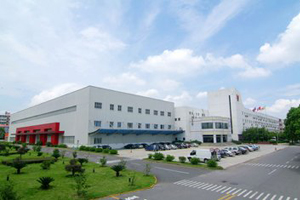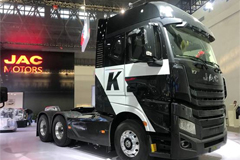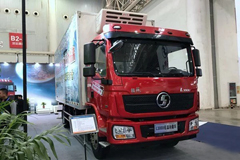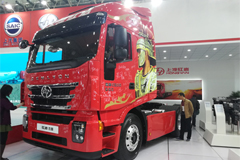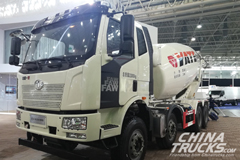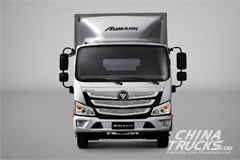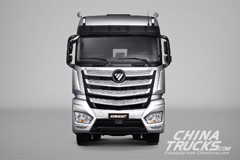Driveless Truck to be Regular Presence on Roads in a Decade
While companies ranging from Google offshoot Waymo to established businesses such as Toyota or General Motors work on self-driving passenger cars, truck manufacturers have been quietly developing similar technology.
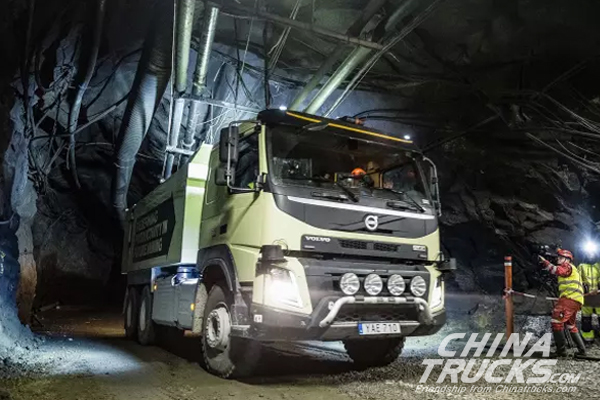
“Driverless trucks could be a regular presence on many roads within the next 10 years,” says José Viegas, former secretary-general of the International Transport Forum (ITF), a think-tank that operates under the umbrella of the OECD, whose members include the world’s richest countries. “Trials on public roads are under way in many regions including the US and the EU. Manufacturers are investing heavily into automation, and many governments are actively reviewing their regulations.”
Volvo Group already has a fully automated truck operating in Kristineberg mine in Sweden. It also recently demonstrated a fully driverless truck in China that can drive between delivery hubs without the need for a human operator.
For truckmakers and their haulage customers, the potential upside from removing drivers is huge in the slim-margin world of shifting goods. Labour accounts for up to 45 per cent of total road freight costs, according to a 2015 study by economic research group Panteia.
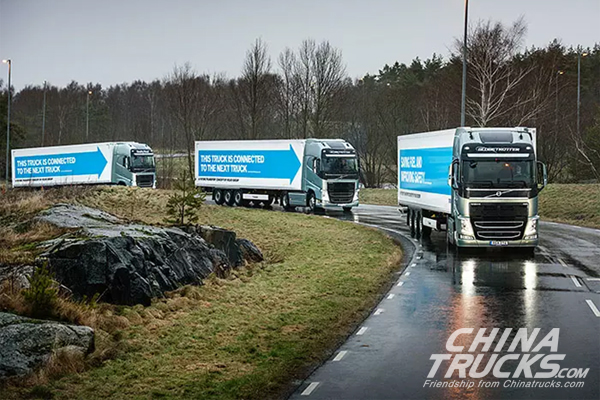
But what will become of the vast trucking workforce?
“Self-driving trucks threaten to disrupt the careers and lives of millions of professional truck drivers,” says Steve Cotton, general secretary of the International Transport Workers’ Federation, a global association of around 700 unions representing nearly 20m members from 150 countries.
In a May 2017 report, the ITF predicted that up to 4.4m of the 6.4m professional trucking jobs in the US and Europe could be eliminated by autonomous technology.
“While truck drivers are typically flexible, self-reliant and able to concentrate for long periods, their relatively low education level and potential automation in other sectors puts them at a high risk of extended periods of unemployment,” the report says.
“Autonomous driving will also happen in trucks sooner or later, but we think this will not lead necessarily to fewer trucks on the road,” a report from analysts at HSBC says. “It should just mean the truck driver can be eliminated, reducing the operating costs and also increase fuel savings.”
Automated trucks may solve another problem too: a chronic shortage of suitable drivers. The industry overall has been struggling to recruit, with potential employees put off by the long stints away from home and the tedium of hours of motorway driving.
“Autonomous vehicles will help the haulage sector deal with the current shortage of drivers in many parts of the world,” says Christian Labrot, president of the International Road Transport Union.
Not all roles will be lost, however. When the Port of Rotterdam began using autonomous vehicles, the shift created jobs in centralised control terminals to monitor the trucks and remotely control them if necessary.
Moreover, when goods in trucks arrive at their destination, they have to be manually unloaded and checked before transferring to final-mile delivery — a difficult area to automate.
Ultimately, all these changes are likely to be slow. Few in the industry expect fully autonomous trucks to be in operation within a decade, and the vehicles are likely to require drivers inside them even when using a high degree of automation that stops short of full self-driving capability.
The slow introduction of the technology will allow for a gradual retraining of the current workforce, and a managed transition to the new technology.
Martin Lundstedt, chief executive of Volvo Group, says: “We need to have a gradual development, where we are training people to do new tasks, but to stop the development would be a mistake. You need to embrace the structural changes to society, otherwise we will not meet the challenges ahead of us.”
What is closer than full autonomy is the potential for trucks to drive themselves part of the time, assisted by humans.
The current technology being tested is called platooning, which involves trucks from the same company synchronising their braking on motorways in order to drive far closer together than would be safe if they were reliant on human reaction times. Driving closer together reduces air resistance and allows for better fuel consumption.
Human drivers are still required to control the trucks, however, for example when truck platoons travelling on highways have to separate at junctions.
Several other barriers remain before trucks can shed their human drivers. One is agreement on the technology used in the trucks so they can “talk” to each other, which is particularly important given most hauliers have several brands of vehicle in a fleet.
Regulatory harmonisation between countries is also important so that trucks can pass smoothly across borders, says Erik Jonnaert, secretary-general of the European Automobile Manufacturers Association. “Otherwise we risk having a patchwork of rules and regulations, which could hinder manufacturers and road users from investing in automated vehicles.”
Connected trucks face particular risks, however. “GPS-spoofing to redirect trucks along with their freight is a very real threat for fleets using autonomous navigation systems,” says Philip Poulidis of BlackBerry Radar, a logistics management platform.
Finally, the trailers pulled by cabs need significant changes before they can function autonomously. Trailers, which can be changed between different cabs, will have to be fitted with sensors that allow the lorry to “see” behind it and that can operate with the self-driving system of any given truckmaker.
This, one industry executive says, could be the ultimate hurdle to clear in the technology’s eventual deployment. “If there are no sensors on the back, you would not want a truck driving itself,” the person says. “I do not think it would be safe.” (www.chinatrucks.com)
Views:0
- Driverless Trucks Debut at World Artificial Intelligence Conference 2019 2019-09-06
- Volvo's Driverless Trucks Begin Working at a mine in Norway 2018-11-29
- Beijing-Based Tusimple Racing Tesla Brings Driverless Trucks to Arizona 2017-09-08
- Driveless Truck 'Platoons' Head for Australia's Main Roads 2017-06-15
- FAW TRUCKS Expands Global Reach with Australian Partnership 2025-03-06
- BYD Unveils 2025 T5 Light Truck Series at Shenzhen Commercial Vehicle Expo 2025-03-05
- China's New Energy Heavy Trucks See Record Sales in 2024 2025-02-14
- XCMG New Energy Mining Truck XGE110 Delivered in Bulk to Northwestern Market 2025-02-13
- January Heavy Truck Sales Drop 28% YoY to 70,000 Units 2025-02-06
- XCMG Exports 300 Heavy Trucks to High-End Overseas Market 2025-01-20
Submit Your Requirements, We Are Always At Your Service.
- FAW TRUCKS Expands Global Reach with Australian Partnership
- Foton Leads in February Heavy-Duty Truck Sales with Upgraded Products
- Dongfeng Introduces 2025 New Products and Technologies to Global Dealers
- GAC Hino Showcases New Models at 2025 GAC Int'l Partner Conference
- Foton and Teld New Energy Form JV to Drive New Energy Heavy Truck Development
- JMC Overseas Sales Surge
- Indonesian Ambassador to China Visits Shaanxi Automobile
- FOTON Launches the "Auman Galaxy Global Experience Tour"
- Geely Expands into Pakistan with New Partnership
- Zhizi Auto Successfully Holds 2025 Product Launch Event
- China's New Energy Heavy Trucks See Record Sales in 2024
- January Heavy Truck Sales Drop 28% YoY to 70,000 Units
- November 2024: Heavy Truck Sales Hit New Highs
- November 2024: New Energy Light Truck Sales Hit 14,000 Units in China
- November 2024 Sees Surge in New Energy Heavy Trucks in China
- Heavy Truck Sales Reached 56,000 units in First Three Quarters 2024
- Heavy Truck Sales in September 2024
- Heavy Truck Sales Reach 59,000 Units in July in China
- Tractor Sales in H1, 2024 Reached 162,100 Units, Up 4%
- China's Truck Export Reaches 351,076 Units in H1 2024



